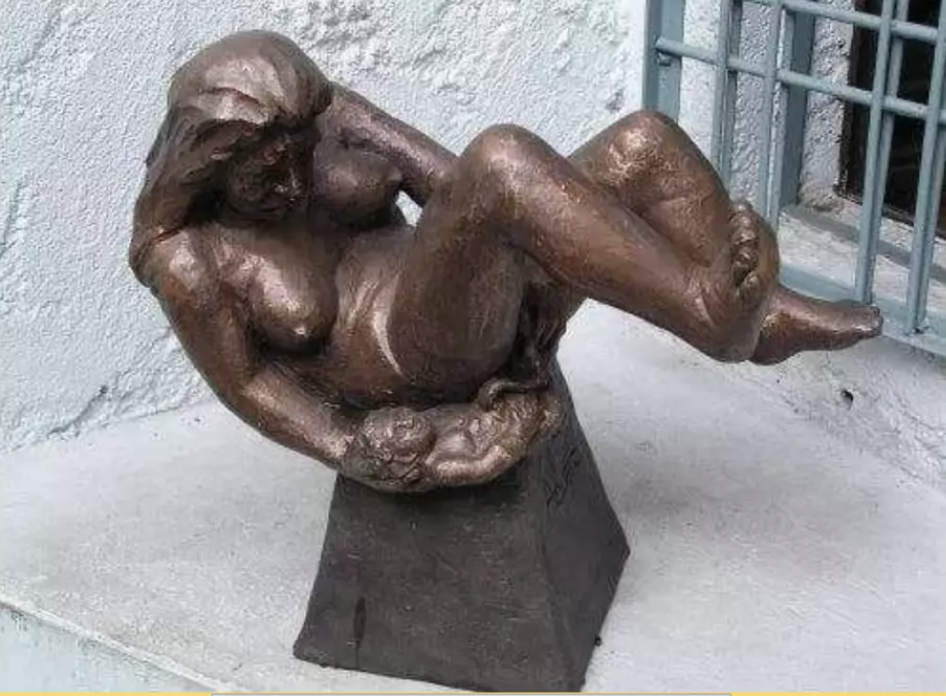“Childbirth” by Napoleon Abueva

Childbirth, bronze sculpture
Copyright 2001, Napoleon Abueva, All Rights reserved
Philippine artist Napoleon Abueva (1930-2018) was a well-known and prolific sculptor in the Philippines. Born in Tagbilaran, Bohol, he was named National Artist of the Philippines for Visual Arts by then President Ferdinand Marcos, making Abueva the youngest recipient of the award.
Many of Abueva’s sculptures touch on themes of birth and maternity. In his 2001 work, Childbirth, Abueva represents a woman who has just given birth and cradles her newborn child with right arm while holding the umbilical cord still attaching her body to her baby’s in her left hand. Depicted in a curved shape that highlights the woman’s arms, legs and core muscles, the woman appears strong as she welcomes her newborn into the world.
Abueva’s image is helpful to other women as they approach labor and birth, reminding them of their own strength. Unaided in the birth scene, the woman of Abueva’s sculpture is capable of giving birth, tending to her child on her own. When visualizing the unfolding of their own labors, those who are pregnant are helped by images that present the birthing woman’s body as strong and calm. The umbilical cord, an organic tube often quickly clamped and discarded after birth, is normalized through Abueva’s work. Modern research has taught us that keeping the umbilical cord unclamped for at least several minutes after birth is beneficial to baby and mother.
Napoleon Abueva created many major works and received a number of prestigious awards for his art. He is known as the “Father of Modern Philippine Sculpture.” Abueva’s history and other information about his work may be found through his Wikipedia page and other pages about his life.